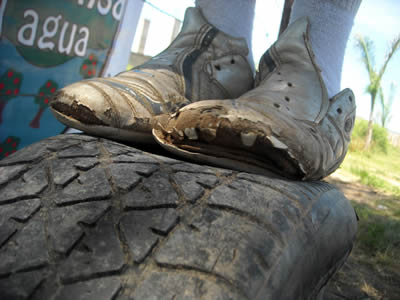Study Explores Link between Economic Growth, Social Cohesion and Equality in the Region
Work area(s)
Topic(s)
The document, drafted by experts at the ECLAC Subregional headquarters in Mexico, analyses the subject of violence.

While economic growth is a basic requirement for progressing towards more egalitarian, fair and inclusive societies, it does not guarantee that countries are on the way to achieving those goals, according to the study Economic growth and social cohesion in Latin America and the Caribbean (in Spanish), which has been published by the ECLAC Subregional headquarters in Mexico.
According to the authors, Mariela Buonomo and Pablo Yanes, it is vital to consider the characteristics and quality of economic growth, the framework of rights in which it occurs, its distributional impact and the type of social ties and relationships that shape and define it.
The document develops an initial understanding of the links between growth, social cohesion and inequality, and includes violence as an important aspect to explore.
The authors see violence as an obstacle in the way of Latin American and Caribbean development. First, it affects people's assets and leads to the depreciation of physical, human and social capital. Second, it has direct and indirect costs (by diverting resources that could be used for other purposes) that affect the economy and society.
In the past 30 years, Latin America and the Caribbean has experienced major institutional, economic and social changes and - particularly since the 1990s - has achieved growth rates above the world average.
The authors declare that, in order to achieve growth with equality, countries' production structures and distributional systems are equally important. This is why ECLAC has put forward the key idea of growth for equality and equality for growth.
The report presents Latin American poverty and income-distribution trends between 1980 and 2011, and then relates these to economic growth. Education and health indicators are then studied to relate them to growth and inequality.
Lastly, the document presents the main indicators for violence and insecurity, before summarizing the impact of these phenomena on the region's economic growth.
Some studies estimate that the direct and indirect costs of violence for goods and people amount to 14.2% of Latin American GDP, with the loss of human capital due to violence representing almost 2% of GDP, the loss of capital resources 4.8% and transfers to victims around 2% of GDP.
Subregional headquarter(s) and office(s)
Type
Contact
Public Information Unit
- prensa@cepal.org
- (56 2) 2210 2040